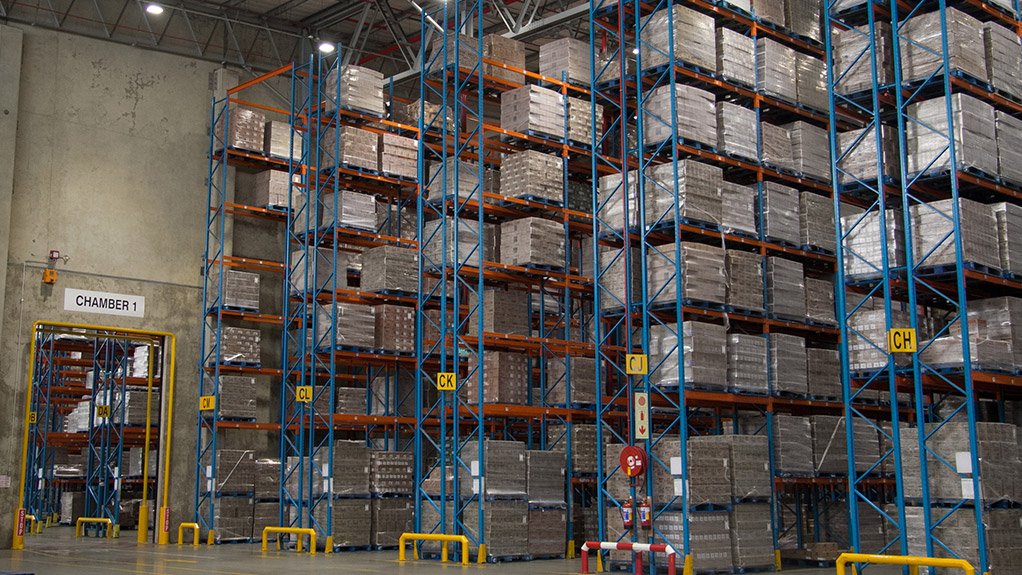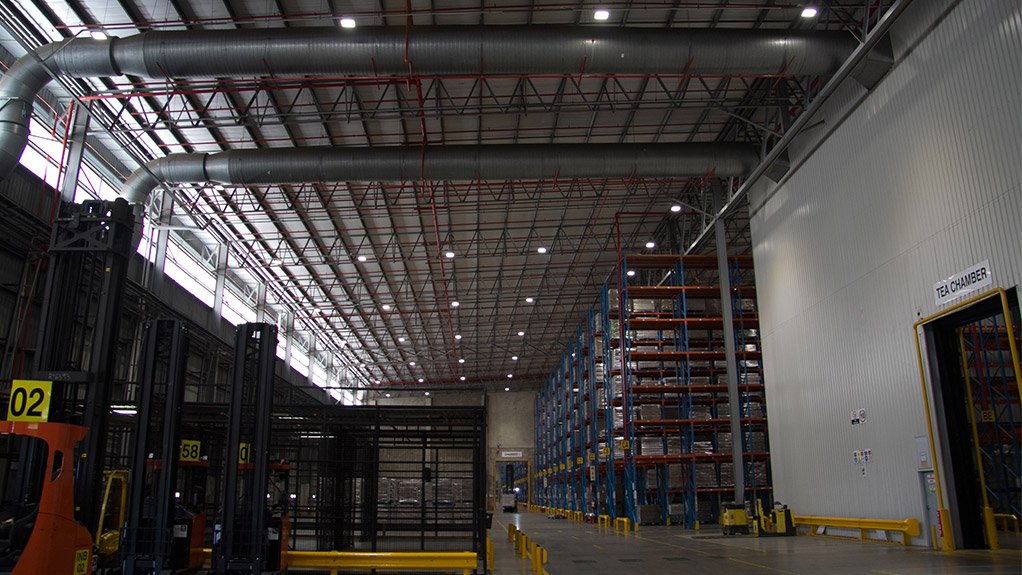On the back of its successfully executed project in the design, supply and installation of a new lighting system at consumer goods company Unilever’s distribution centre in Pietermaritzburg, KwaZulu-Natal, energy efficient electrical solutions provider Magnet will pursue large-scale energy solution offerings to other Unilever sites in 2018 and 2019.
Operational staff are continually receiving and dispatching goods from the distribution centre – a 45 000 m2 warehouse comprising sections A, B and C, with each section consisting of goods storage racks and aisles. The warehouse roof height ranges between 14 m and 20 m at the apex.
“The Unilever project is part of Magnet’s continuously growing product offering that uses the latest technology and showcases the company’s ability to undertake and successfully complete large-scale energy solutions projects,” Magnet project manager Mukhtar Ahmad Khan tells Engineering News.
He notes that the solution implemented for Unilever enhanced its sustainability drive. The large reduction in energy culminated in a “substantial” reduction in the distribution centre’s carbon footprint and created an improved work environment for staff.
This sentiment is echoed by Unilever maintenance engineer Thulasizwe Ncalane, who says the light-emitting diode (LED) lights used to run the warehouse have assisted in decreasing power consumption from the grid and carbon emissions. “We are pleased to contribute to the progress of sustainable growth,” adds Ncalane.
The Magnet team’s energy- saving solution for the distribution centre encompassed the replacement of existing T-bay fittings and fluorescent tubes with Philips high-bay LED luminaires. Magnet’s custom-made lighting design, incorporating the latest lighting technology, used about 170 fewer light fittings than the previous system, and it is also more energy efficient, with expected savings of up to 62%. These robust components offer extended service life and need minimal maintenance, extolls Khan.
Magnet supplied a holistic solution in accordance with Unilever’s specified needs, which entailed interviewing employees on site and observing them during operations to take into consideration the human aspect of lighting and apply it during the design, he explains.
The company also considered the sealing effectiveness of the technology to ensure the prevention of foreign particle intrusion and guaranteed the required 150 lux at the end-of-life, which is five years for this system, in accordance with Magnet’s energy design methodology.
“Audits were undertaken throughout the installation process, as well as after project completion. Lux levels average above 220 and the energy consumption is being monitored by Unilever.”
The project, which was completed in December, boosted business in the province, such as using the services of lamp disposal and waste recycling company eWaste Africa, to recycle the redundant lamps and fittings.
In line with Unilever’s zero-waste-to-landfill policy, all redundant T-Bay fixtures and fluorescent tubes were recycled.
Edited by: Zandile Mavuso
Creamer Media Senior Deputy Editor: Features
EMAIL THIS ARTICLE SAVE THIS ARTICLE
ARTICLE ENQUIRY
To subscribe email subscriptions@creamermedia.co.za or click here
To advertise email advertising@creamermedia.co.za or click here















